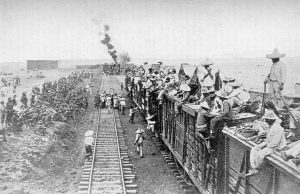Ufa, Russia — 1989
On June 4th, a propane gas pipeline began to leak. Engineers noticed the drop in the pipeline’s pressure, but decided to increase the pressure to get it to its normal levels and didn’t think to check for leaks. Consequently, a huge amount of the gas settled in a gully that sat between the towns of Asha and Ufa
At around 1:15 pm, two trains with more than 1300 travelers passed each other in the gully. The resulting sparks ignited the gas, causing a fireball that fanned out for about a mile, leveled trees more than 2 miles away, and was visible from a distance of 95 miles. The explosion was estimated to be the equivalent of 10 kilotons of TNT — the atomic bomb dropped on Hiroshima was 16 kilotons.
Seven of the cars were fully burnt and an additional 30 were destroyed, as were the two locomotives. The death toll was 575, with virtually all of the remaining 800 injured.
Nine officials of the pipeline were charged and faced a maximum penalty of five years imprisonment, although the results of the trial were not made public.

Guadalajara, Mexico — 1915
On January 22, in the midst of the Mexican revolution, families of troops were being transported to the town of Guadalajara. The train of 20 cars set up for this purpose was grossly overloaded, to the point that some passengers were clinging to the undercarriages and roofs.
While going down a steep descent, the brakes failed and the engineer lost control. The train kept on gathering speed as it made it’s way down the tracks. Passengers on the roofs were hurled to their deaths as it took curves at excessive speeds. The train finally derailed at a curve and plummeted into a deep ravine.
Of the 900 passengers, only 300 survived, less than a third of its official passenger count.

Bihar, India — 1981
June 6th, in the middle of India’s monsoon season, was an especially windy and rainy day, and the Baghmati River was at flood stage. A train was crossing the bridge when it derailed. The causes of the accident was uncertain because it was not well-documented. However, there are a few theories — it might have been hit by a cyclone or a flash flood, or there might have been brake problems that resulted when the engineer braked too hard to avoid hitting a water buffalo.
Whatever the cause, the nine-car train with about 1,000 passengers plunged into the Baghmati River. Because of the remoteness of the location, rescue workers were hours away. By the time they arrived, many of the passengers who had survived the initial crash either drowned inside the train or were swept away by the flood waters.
Of the 1000 passengers, it is believed that 800 were killed, but more than 300 bodies were never recovered.







